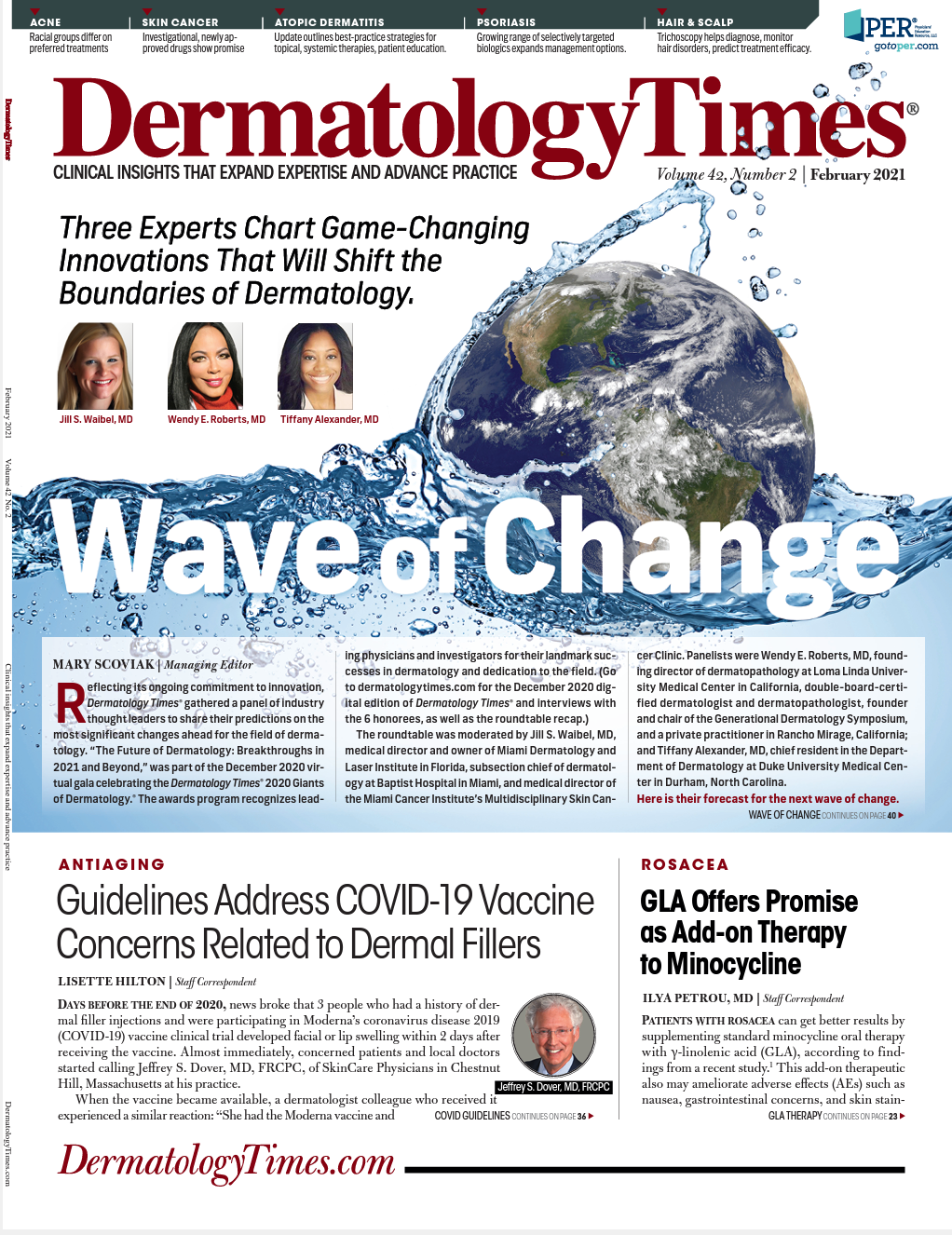- Acne
- Actinic Keratosis
- Aesthetics
- Alopecia
- Atopic Dermatitis
- Buy-and-Bill
- COVID-19
- Case-Based Roundtable
- Chronic Hand Eczema
- Drug Watch
- Eczema
- General Dermatology
- Hidradenitis Suppurativa
- Melasma
- NP and PA
- Pediatric Dermatology
- Pigmentary Disorders
- Practice Management
- Precision Medicine and Biologics
- Prurigo Nodularis
- Psoriasis
- Psoriatic Arthritis
- Rare Disease
- Rosacea
- Skin Cancer
- Vitiligo
- Wound Care
Publication
Article
Dermatology Times
Racial Differences for Preferred Acne Care
Author(s):
Factoring in a patient’s genetic heritage when choosing an acne care regimen could improve adherence, according to survey results that identify race-related differences in preferred sources of information and treatments for acne.1
The findings also have implications for increasing satisfaction with treatments and physician care, said Roopal V. Kundu, MD, senior author of the study and a professor of dermatology and medical education at Northwestern University Feinberg School of Medicine in Chicago, Illinois.
“Dermatologists are well trained and knowledgeable in making deep and meaningful connections with our patients to treat not only the cutaneous aspects of dermatological diseases but also the psychosocial implications,” Kundu said. “Our study [shows] that patients’ cultural and social constructs may influence their management preferences for acne. Understanding these preferences will allow us to improve the care delivered to all of our patients.”
The cross-sectional study of adults, conducted by Kundu in collaboration with Monica Mehta, MD, a research intern at Feinberg, noticed that subpopulations of patients presenting at different stages of acne voiced different preferences in prioritizing topical or oral medications, and often had tried various OTC and homeopathic remedies.
“Although there are many studies in the literature describing how perceptions of health and skin disease burden vary across races and cultures, there appears to be less research exploring differences in preferred treatment attributes,” Kundu said.
Kundu and Mehta designed a 31-item online survey to collect data on demographics, acne severity, treatment preferences and adherence, perceptions of causes of acne, and treatment valuation. Approximately 1200 18- to 73-year-old individuals with self-identified acne were sent the survey, and 214 returned a completed questionnaire.
White individuals made up the majority of the study population (67%), followed by South Asian (13.8%), East Asian (12.4%), and Black (8.7%) individuals. The remainder were of mixed or other race. Women accounted for 85% of the population.
Responses regarding treatment varied. White respondents were significantly more likely than East Asians and South Asians to see a health care professional for treatment (88% [n = 126] vs44%[n=12]; P<0.001and(53%[n=16]; P = 0.002, respectively.
White individuals (27%, n=39) preferred using prescription face washes/creams/gels, while East Asian (41%, n=11), South Asian (60%, n=18), and Black (37%, n=7) respondents preferred OTC washes/creams/gel.
White respondents were less likely to prefer OTC products for acne (20% vs 36%-60%) and more likely to use a variety of prescription treatments, including topical agents, oral antibiotics, oral contraceptives, and isotretinoin, Kundu said.
East Asians (63% [n = 17]) were less likely to get information from health care professionals (P = .03). This group was more likely (93% [n = 25]) to get information about acne causes and treatments from the internet compared with all other races (P = .04), and 56% sought recommendations from family and friends.
White respondents turned to health care professionals more frequently than to the internet (87% vs 74%), as did South Asians (77% vs 60%). Approximately three-fourths of the Black participants said they preferred both health care professionals and the internet as sources.
Studies are under way or planned to look more deeply at preferred treatments and resources for patients with acne and explore racial and cultural preferences for treating skin aging, vitiligo, and keloids, according to Kundu.
“Differences exist in perception and treatment preferences for acne between races, and exploring them may enhance providers’ understanding of their patients’ preferences,” Kundu said. “Health care organizations and professionals may need to utilize the internet and social media to access non- White populations.”
Disclosure:
Kundu and Mehta report no relevant disclosures or financial interests.
Reference:
1. Mehta M, Kundu RV. Racial differences in treatment preferences of acne vulgaris: a cross-sectional study. J Drugs Dermatol. 2020;19(12):802. doi:10.36849/ JDD.2020.5488



























